Shamil Akhmadullin
Psychologist, writer, author of more than 30 books and manuals on effective teaching of children, including “Speed Reading for Children. How to teach a child to quickly read and understand what they read”, “Development of memory in children”. Founder of a network of centers for speed reading, development of memory and intelligence in children TurboRead.ru.
The main activity of children of primary school age is learning. It makes significant changes to psychological processes, placing high demands on concentration. Children's ability to work effectively in the classroom is the result of the ability to focus on the learning process, the topic and content of the lesson, the words of the teacher and their own actions. That is why it is so important to develop attention, which will help the child learn fully and successfully cope with assigned tasks.
How attention is formed in children
To develop attention skills during the learning process, it is important to comply with several requirements:
- sufficient pace of learning and absence of long pauses;
- reliance on active mental activity (application of generalization and comparison tasks, searching for examples and drawing conclusions);
- the absence of external stimuli that attract involuntary attention and distract from the cognitive process (loud remarks, comments, sudden movements);
- clarity and brevity of explanations before the child begins to perform any work.
It is strictly forbidden to comment on the child’s actions when he is concentrated: making comments, giving suggestions. By speaking hand in hand, you distract the child from the task at hand and force him to concentrate on your words and again on work, which causes fatigue and loss of interest in the activity.
Various games and observation exercises contribute to the formation of attention. The search for correspondences, errors, changes attracts and maintains the child’s attention, teaches him to concentrate without additional calls for attentiveness.
Games for younger preschoolers to develop attention
Children from 3 to 4 years old still find it difficult to focus on speech and verbal exercises. Therefore, visual perception needs to be involved in developing attention. It should also be taken into account that the method of cognition in younger preschoolers is visual and effective thinking.
Children at this age can look at pictures, repeat actions, and compare objects. These are the games that are suitable for them to train their attention.
Build like me! Take two sets of cubes of different colors (no more than 5). Sit next to your baby, taking one set for yourself and placing the second one in front of your child. Build a simple structure from your three or four cubes. Invite your child to build the same
If the preschooler succeeded, but without taking into account color, draw his attention to this fact. After praising your child, encourage him to do it again
As the child gets better at it, complicate the designs and add new geometric shapes (cone, cylinder...)
What do dolls lack? Place three dolls in a row. Tell them what they are going to eat. Place a plate in front of two dolls, a spoon for two more, and also place two cups. Arrange everything so that each doll has two items. There should be utensils on the side, both necessary and unnecessary. Ask the child what is missing from the first doll, the second... Let the child complete the “setting”.
What have you lost? Draw a simple plot picture: a house, a tree, the sun, a cloud, etc. On a separate sheet of paper, roughly repeat the basis of the drawing from the three main elements. Next, ask your child what else needs to be added, comparing both drawings.
How to improve the attention of children 7–10 years old
Small volume, insufficient selectivity, undeveloped switchability and stability of attention are shortcomings that can be eliminated thanks to special exercises included in the educational process. To improve the attention of a child 7–10 years old, it is necessary to use two types of exercises:
- special exercises to develop the basic properties of attention (stability, distribution, concentration);
- exercises that form attention as a personal property.
Inattention is the result of children focusing on the general rather than the specific. While grasping the general meaning of a story, the essence of a statement or a mathematical problem, children do not delve into the details and do not take into account important elements.
The Lifehacker Telegram channel contains only the best texts about technology, relationships, sports, cinema and much more. Subscribe!
Our Pinterest contains only the best texts about relationships, sports, cinema, health and much more. Subscribe!
The purpose of specialized exercises is to teach the child to perceive details against a general background.
When properly organized, developing the attention of younger schoolchildren develops into attentiveness - an integral feature of a successful person. It is important to explain this to children, convincing them of how necessary observation is, the ability to look for shortcomings, compare, and see changes. Tell your children that thoughtful people always have a goal and easily achieve it.
By forming a daily routine together with your child, you will teach him to pay attention to important events in combination and separately. By gradually developing an action plan, you will teach the student to concentrate on details.
Equally effective for improving children’s attention are exercises with paired control, when neighbors at a desk exchange the results of their work and look for each other’s mistakes. Seeing the failures and shortcomings of others, children learn from the mistakes of others, being more attentive to their own work and its results.
You can improve a child’s attention by teaching her discipline, responsibility and accuracy. Attentive children are collected children who treat things with care and know how to take care of loved ones and themselves. Do you want to make your child responsible and attentive? Get a pet and entrust the student with caring for it.
What methods are used in games
To promote the proper development of all types of attention, verbal and visual (demonstration) methods or techniques are used. They are introduced during classes and educational games.
Speech
Without developing speech skills, it is impossible to develop memory, because they are interconnected. Therefore, it is necessary to talk a lot with children, as well as perform oral tasks. A game would be suitable, according to the rules of which an adult reads a fairy tale to children, and they sketch its characters during the story.
Riddles in the form of poems significantly stimulate brain activity and develop memory. In addition, the answer (the solution) is already encrypted in their text. Children can compete with each other to see who can guess the fastest.
Demo
Visual images, like verbal techniques, activate attention. Various objects are used in such exercises:
Various objects are used in such exercises:
- Pictures;
- toys;
- cards, etc.
Practical lessons
Practical tasks include:
- Appliques - cutting out individual objects from colored paper. At the same time, children must match the color of the object with the selected sheet of colored paper (melon - yellow, Christmas tree - green, strawberry - red, etc.).
- Crafts - children, together with a teacher or parents, sculpt various figures from polymer clay that correspond to surrounding objects. They then look for differences and similarities between the sculpted figurine and the original.
Exercises for training the attention of children 7–10 years old
Constant training of attention and memory is the key to developing in a primary school student the skills necessary for effective and successful learning. Including the following games in primary education has a positive effect on children's academic performance and their ability to concentrate.
Game "Remember everything"
The game is perfect for activities in pairs or small groups (3-4 people). The main task of the players is to memorize words in strict sequence, and compliance with the conditions is monitored by a third party (parent, teacher, student appointed by the judge), recording the chain of words. To prevent the game from boring children, use words of the same topic: fruits, vegetables, cities, countries.
The gameplay goes like this: “Carrots,” says the first player. “Carrots, radishes,” says another. "Carrots, radishes, tomatoes..."
A child who mixes up the sequence or forgets a word is eliminated from the game. The winner is the player who has not made a single mistake.
The competitive nature of the game motivates children, forcing them to participate with interest and train their memory and attentiveness.
Exercise “Find words”
The game is appropriate for Russian language lessons and perfectly complements grammar exercises. Children are asked to find words in a series of letters, highlighting the odd ones according to a certain criterion: part of speech, gender, number, case.
For example:
1 RNA CAT NVPRA COW EURA DOGS CRVM
The correct answer is: dogs is an extra word because it is a plural noun.
2 NORALAL COAT YEAH BRA YEA SHAMPOO
The correct answer is: shampoo is an extra word because it is a masculine noun.
Exercise “Name the color”
An interesting exercise that can be turned into a competition to choose a winner. The essence of the task is to accurately name the colors in which the words are written. The game develops concentration, because the child focuses on the color of the font, and not on the word denoting the color.
Exercise "Find the differences"
A classic mindfulness exercise. The child’s task is to find all the differences between two similar images that can be found on the Internet. The exercise is suitable for both first-graders and students in grades 2–4.
For small children aged 7–8 years, it is better to show images with a small number of large elements in discreet colors. For older children, bright pictures with an abundance of small details are suitable, the consideration of which trains not only attentiveness, but also improves stability and attention span - the ability to concentrate on several objects at the same time.
Examples of pictures
Exercise 2. “Spy Kids”
Try to read what is written in the picture.
You can not? But children can be spies! And why? But because they have the key to unraveling this encryption. Here he is!
Now you can find out what is written in the top picture. Leave your answer options in the comments. In order to compose an encrypted letter or, on the contrary, decipher it, you need to be very careful, otherwise it will turn out to be complete nonsense.
If you want absolute secrecy, come up with your own code and don’t show it to anyone. Then no one will ever know what is written in your secret message. Well, for training, you can look for the code on the Internet. I really liked this one.
This is not a letter, but a disco!
What you need to know about the physiology of memory? What is the difference between memory before 3 years and after?
Yes, it's all about physiology. Remember? Until the age of 3, the child was so inquisitive, everything was interesting to him, he could remember a huge poem, even a poem, and read it with pleasure.
And how he composed it! Where does all this disappear with age?
Until the age of 3, a child’s memory is compared to a sponge that absorbs everything. There is an accumulation of knowledge and impressions by all systems of the body.
During this period, a child uses completely different parts of the brain for memorization than adults; he has a completely different potential.
His brain contains a huge number of connections for all occasions, which later disappear in an adult. This loss is up to 75% in some brain nuclei. This, of course, does not make us mentally retarded)
A child under 3 years of age has connections between different areas of the cerebral cortex. This is how auditory and visual memory work in unison and complement each other.
This is ensured by connections between the visual and auditory cortex. Any sound can give rise to color, and color can turn into sound. This phenomenon is called synesthesia.
Experiment with genius people
An experiment was conducted in England where people with phenomenal memory were studied. So, it turned out that a very large part of the 52 people have synesthesia.
The ability to “hear” color or, for example, they hear sound and at the same time there is an association with letters, and the smell gives rise to tactile sensations.
The brain of children under 3 years old is initially configured in the same way; it is universal and can do a lot. And, of course, it's important to use this time to strengthen amazing connections.
What needs to be done from birth in order not to miss time, read our article Makoto Shichida’s Method for Children. How can busy mothers do it anyway? (Link will open in a new window).
What happens next?
Unnecessary neurons that were not included in strong connections gradually die off as unnecessary. After 3-4 years with a child who has not been specially trained, it is difficult to learn a simple quatrain, versus a whole poem up to 3 years.
Completely different brain structures become responsible for memory. Children's memory is activated for the unexpected, new, interesting; the brighter for them, the better.
These are features of the development of memory at this age - it is involuntary.
But as the child’s brain continues to develop, the brain structures responsible for memory in a child from 4 to 5 years old will not be decisive for assessing his memory in the future.
Only by the age of 6-7 years does the memory of the cerebral cortex begin to develop, voluntary memory, which the child will use in the future.
Voluntary memory is when a child uses volitional effort or will to remember.
It would be good if by this age you had already started working on memory development with him.
If your child is still a preschooler, then all recommendations for memory development are here: Development of memory and attention in preschool children - the best games and exercises (opens in a new tab) and
You will find 44 of the best games for attention and memory for children aged 4 to 6 years here (opens in a new tab).
But if this does not happen, do not be sad. It’s never too late to develop memory for a child, and for an adult too. But what should be done? Where to start, where to run?
What else is important to do to improve a child’s memory?
Foreign language classes
Nothing strengthens and develops memory more than memorizing at least 5-10 foreign words a day.
And I advise you to learn foreign poems by heart, line by line, as described in the exercise for training auditory memory.
Music
Needless to say, music can help you and your child with everything: relax, have fun, improve your health, concentrate, expand and strengthen your memory, and also develop your brain.
How can you develop your brain and remember twice as fast while listening to music? You can find the answer and music at this link (opens in a new tab).
You can simply listen to music, for example, Mozart concerts, which have a beneficial effect on your health. And some can even replace a cup of coffee.
You can practice playing musical instruments, which completely reconfigures the brain.
Experiments have proven that simply listening to music develops the imaginative right hemisphere, which is imagination, phenomenal memory, and intuition. How does this happen?
Music triggers streams of images. These are the pictures that flash in our heads when we listen to music.
Using a tomogram, it was discovered that when listening to music, the areas of the right hemisphere that control vision were activated.
That is, simply listening to music activates the right hemisphere, and what is active develops.
Even if a child often just listens to music, his spatial perception improves - this is an awareness of the shape, size, and location of objects relative to each other.
But what happens when a child plays music and not just listens to it?
Having conducted experiments, scientists have proven that if a child began to study music before the age of 7 and has been studying for about three years, then he is superior to other children in perceiving information by ear (auditory memory, which is so necessary at school), in motor movements (motor skills) and logical thinking.
The auditory cortex of these children is 30% larger than that of children who do not study music.
They have a large area of the cerebral cortex involved in work (finger movement, if this is playing the piano).
Reading
According to scientists, when reading more than an hour a day, new neural connections are formed. When reading, we use imagination, emotions, memory develops, foresight is activated, we think and reflect. The brain is working!
In addition, when reading aloud, speech is enriched with new words, the child speaks better and communicates more easily with friends.
If your child doesn't want to read, read to him yourself.
Solution
Many parents, faced with the problem of “hyperactivity,” resort to drug therapy (as prescribed by a doctor, of course).
They create topics and blogs and share their own experiences. No one will be surprised by topics like: “What to drink?”, “Who to contact?”; “What medications did you take?” Parents decide whether to treat a child with drugs or not after consulting a doctor. The true way out of the situation is corrective classes to develop concentration, memory, sensory and visual perception.
If a child does not have concentration, parents wonder: “What to do?” Set a routine for your child. Rising, bedtime, daytime and nighttime sleep should always begin at the same time. The baby's life should be confined to a strict schedule. This is necessary so that the baby gradually learns to predict his actions. For example, after a night's sleep, he will go to the bathroom himself to perform water procedures.
The first thing you need to learn is to observe the required rituals. After walking outside, be sure to wash your hands, and before going to bed, read a book or tell a story. This way the baby will be able to switch and tune in to the usual type of activity that follows the ritual.
Second, get used to single-tasking, which I mentioned above. Example - if you eat, do it in a certain place without outside entertainment (cartoons, music, etc.).
Third, walks in the forest, in the park, in a quiet place to clear RAM.
Why is it important to teach and learn concentration?
There are people diagnosed with mental retardation who become geniuses in a certain field. I remember Forrest Gump, the main character of the film by Robert Zemeckis (by the way, this hero has a real prototype). Suffering from a mild degree of mental retardation, he was nevertheless able to achieve outstanding success in various areas of life. Remember how he did it? He simply gave all his attention without reserve to what he was doing at the moment, without thinking about anything else and without being distracted by anything else. And that was enough!
Success in all our endeavors depends, first of all, on how well we can concentrate our attention on the task or problem being solved: how long and how clearly we can keep it in the focus of our consciousness, without being distracted by anything else.
If a person does not know how to concentrate on an uninteresting task at 4 years old or at 15 years old, this is normal. He still has a lot of time to learn this.

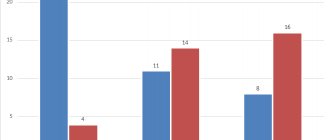

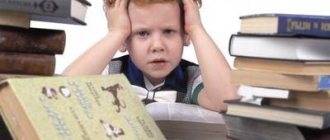
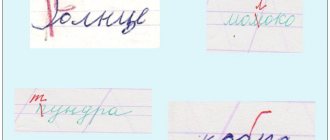
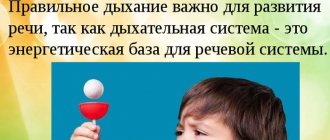
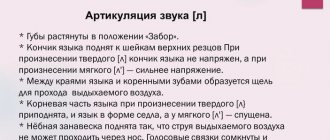
![Letter L and sound [l]](https://pleshakof.ru/wp-content/uploads/bukva-l-i-zvuk-l-330x140.jpg)